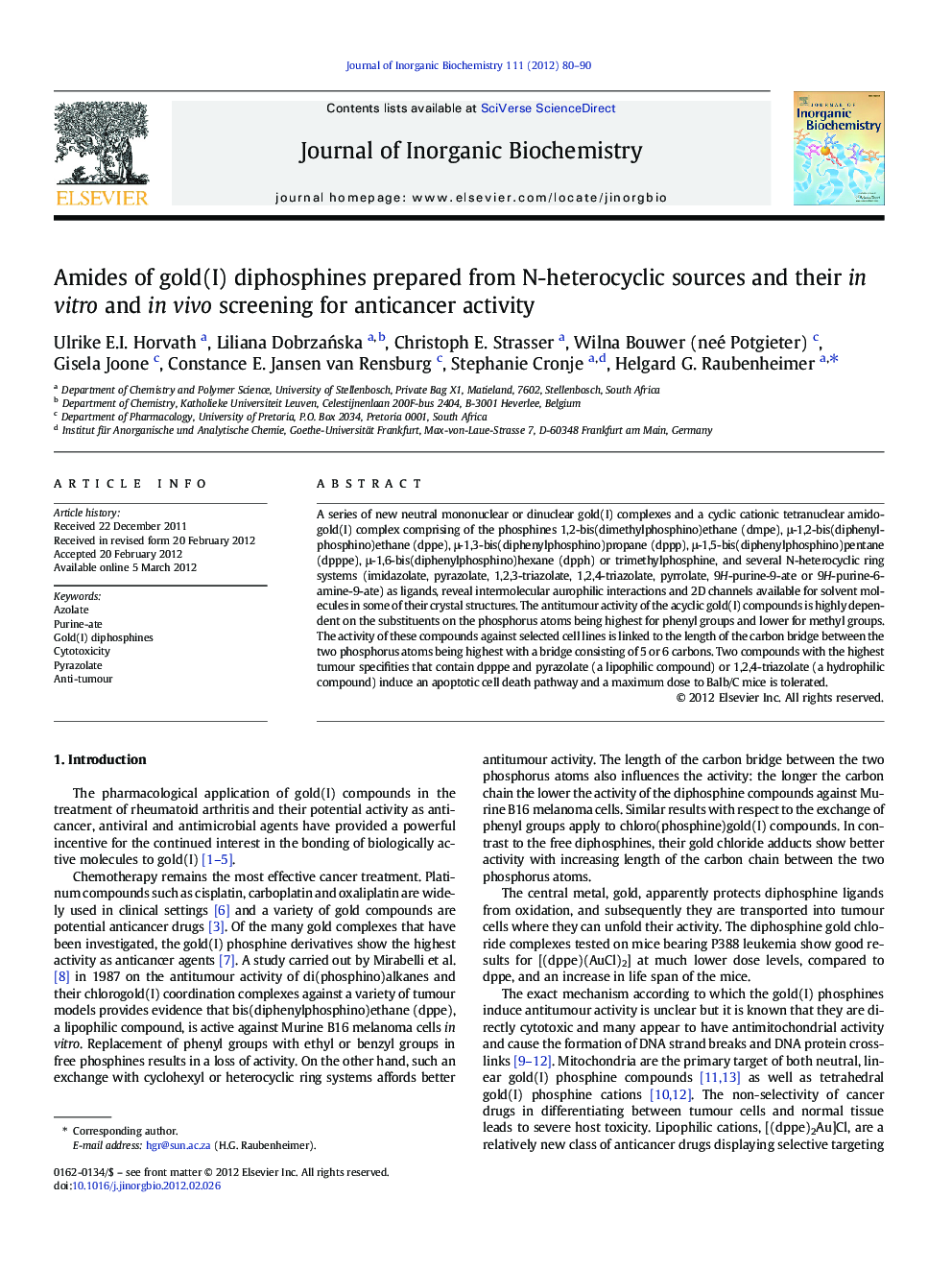| Article ID | Journal | Published Year | Pages | File Type |
|---|---|---|---|---|
| 1317753 | Journal of Inorganic Biochemistry | 2012 | 11 Pages |
A series of new neutral mononuclear or dinuclear gold(I) complexes and a cyclic cationic tetranuclear amidogold(I) complex comprising of the phosphines 1,2-bis(dimethylphosphino)ethane (dmpe), μ-1,2-bis(diphenylphosphino)ethane (dppe), μ-1,3-bis(diphenylphosphino)propane (dppp), μ-1,5-bis(diphenylphosphino)pentane (dpppe), μ-1,6-bis(diphenylphosphino)hexane (dpph) or trimethylphosphine, and several N-heterocyclic ring systems (imidazolate, pyrazolate, 1,2,3-triazolate, 1,2,4-triazolate, pyrrolate, 9H-purine-9-ate or 9H-purine-6-amine-9-ate) as ligands, reveal intermolecular aurophilic interactions and 2D channels available for solvent molecules in some of their crystal structures. The antitumour activity of the acyclic gold(I) compounds is highly dependent on the substituents on the phosphorus atoms being highest for phenyl groups and lower for methyl groups. The activity of these compounds against selected cell lines is linked to the length of the carbon bridge between the two phosphorus atoms being highest with a bridge consisting of 5 or 6 carbons. Two compounds with the highest tumour specifities that contain dpppe and pyrazolate (a lipophilic compound) or 1,2,4-triazolate (a hydrophilic compound) induce an apoptotic cell death pathway and a maximum dose to Balb/C mice is tolerated.
Graphical abstractAmong a series of gold(I) complexes with diphosphine and deprotonated N-heterocyclic ring systems as ligands, the compounds containing diphenyl(phosphino)pentane and pyrazolate (lypophilic) or 1,2,4,-triazolate (hydrophilic) have high anti-tumour specificities. They induce an apoptotic cell death pathway and a maximum dose of 1.5 μmol/kg when administered to Balb/C mice is tolerated.Figure optionsDownload full-size imageDownload as PowerPoint slideHighlights► In 25 new complexes diphosphines and azolate-type ligands coordinate to gold. ► Solvent molecules and counterions appear within channels of a crystalline complex. ► Cytotoxicity is dependent upon aliphatic C chain length in the ligands. ► An apoptosis cell death with certain mitochondrial involvement is indicated. ► Tolerated doses compared to [Au(dppe)2]Cl, tumour specificity is much better.
